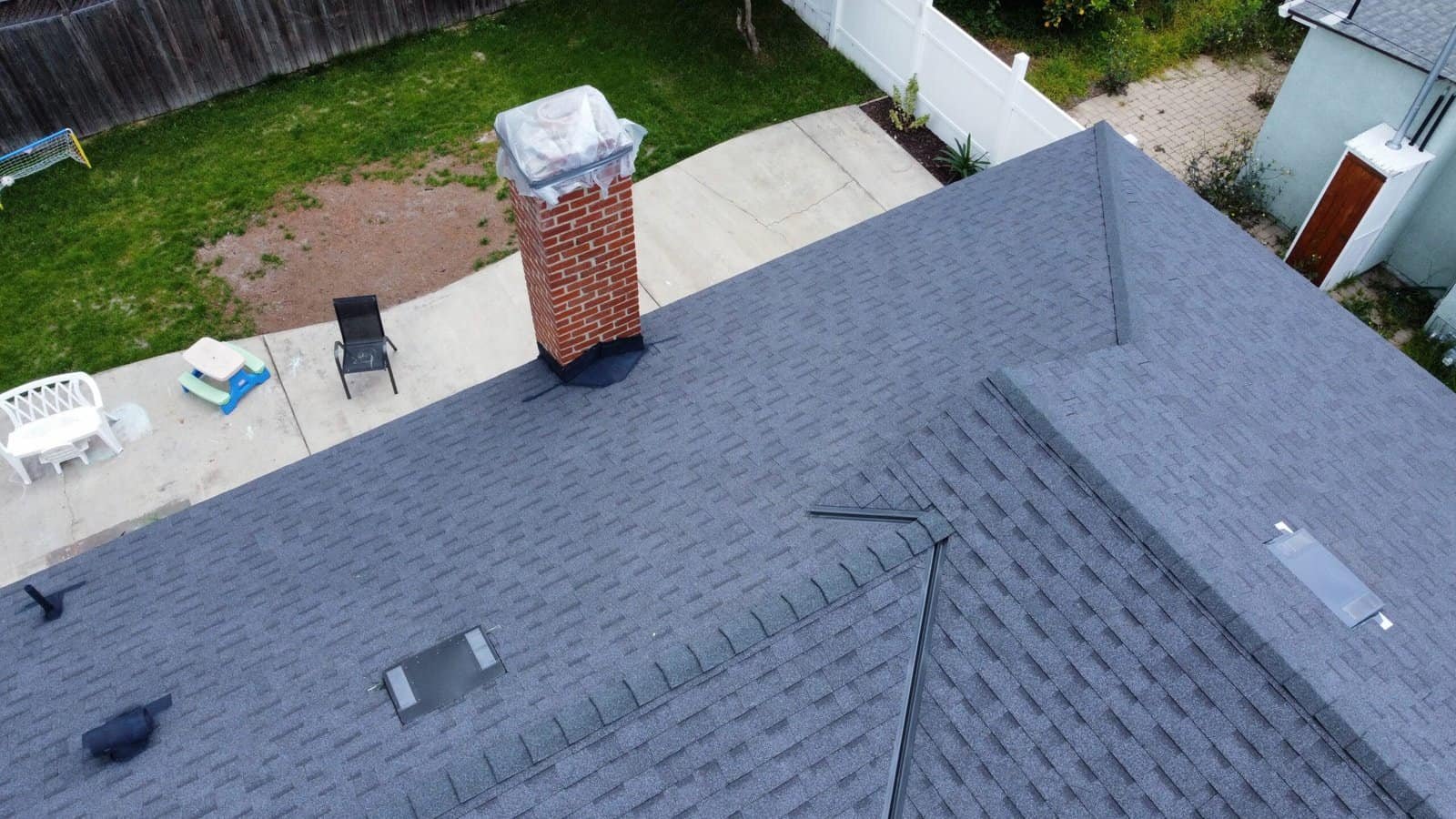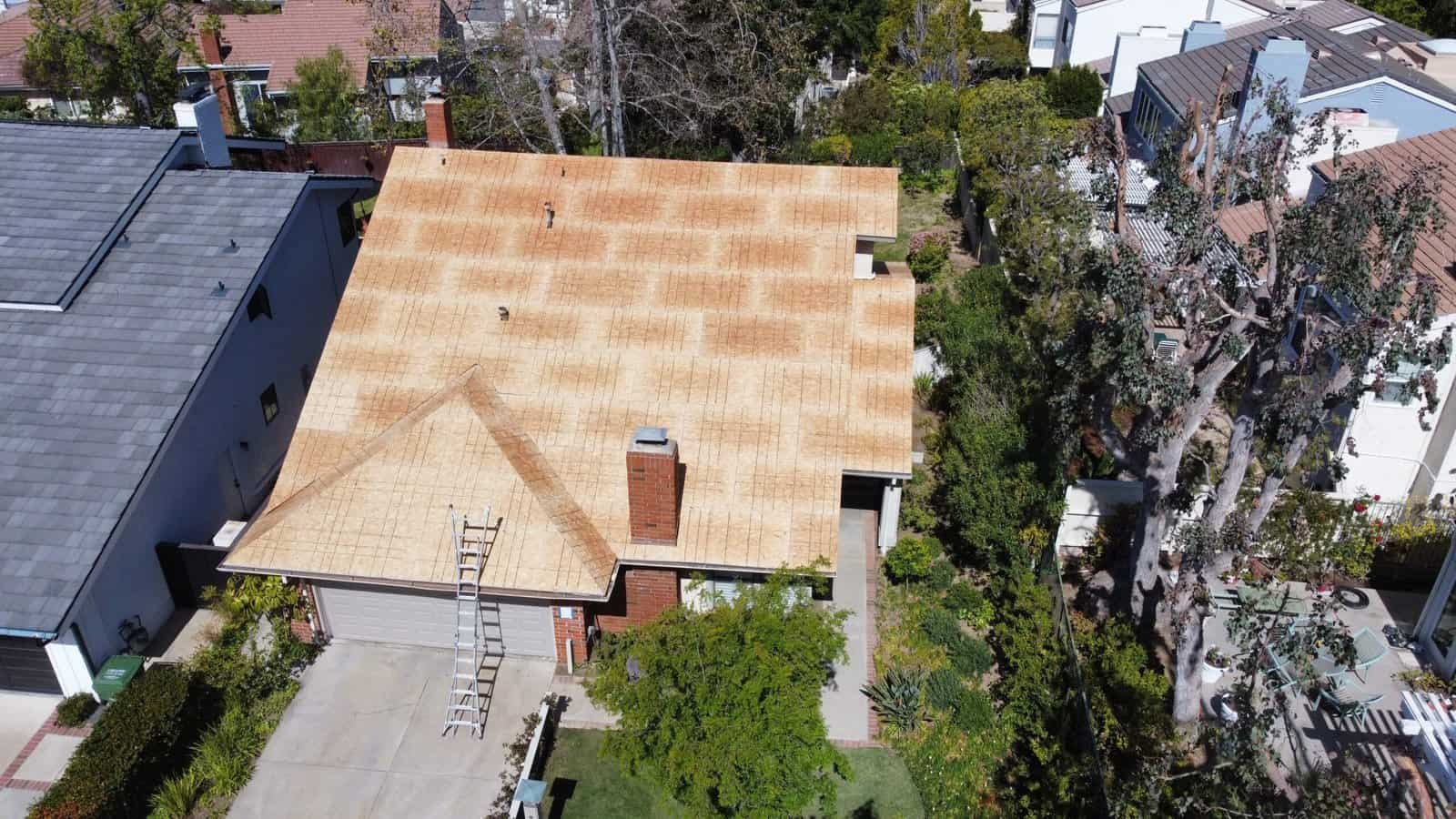Homes that have chimneys demand more upkeep than those that don’t. You might need to fix your chimney flashing if you’ve lately experienced a chimney leakage or observed rust spots within your fireplace.
Table of Contents
ToggleA chimney has several different components, all of which are crucial to how well it functions. The security of your home is in jeopardy if even one component of your chimney is fractured, partially cracked, or just absent. Flashing chimneys is not an exemption.
Tuckpointing, sweeping, liners, and other chimney services are frequently discussed, yet flashing frequently goes unmentioned. The efficiency of your chimney depends greatly on the chimney flashing, though.
A triangle-shaped sheet of metal called chimney flashing loops around the chimney and descends to the roofline. To prevent water from leaking into the home, it corrects for variations in pitching and inclination.
A steel or polymer thermal layer called chimney flashing conceals the chimney from the weather. It is typically seen around chimneys underneath the rooftop covering to stop water from entering the inside of the house. This flashing’s job is to cover any brickwork gaps that may otherwise result in leaks and moisture damage. Water can seep down between the brickwork of a chimney that has been damaged by strong winds and strike these flashings.

Types of Chimney Flashing
A highly popular choice is aluminium. On any kind of roofing, aluminium flashing may be placed, and it is economical. Additionally, it resists corrosion.
Metal is another substance that is frequently used for chimney flashing. It gives exceptional durability and corrosion resistance.
Lightweight, incredibly strong, and increases aesthetic attractiveness is copper. Copper is weather-resistant and will never tarnish. But the most expensive choice is copper.
Only use vinyl or PVC in regions with warmer regions. Under severe weather, it can crack.
When to repair your chimney flashing
Flashing for a chimney or rooftop can endure up to 30 years if it is placed correctly. The environment you live in, the size and design of your chimney, and the substances used to build it all have an impact on how long something will last. Knowing the year your house was built will enable you to monitor the chimney’s lifespan.
It is necessary to fix the chimney flashing if:
- Leaks coming from the chimney’s exterior or interior
- Dripping noises and physical signs, such as puddles
- Tan or grey bricks
- Rust marks
- Indoor walls or ceilings near the chimney that have water marks on them
- Spaces in the sealant surrounding the flashing that can be seen
One thing to keep in mind when it comes to leakages is that if you see water within your fireplace, the problem may not even be with your chimney but rather with your chimney cover.
You might not discover water ingress until it has permeated deeper into your rooftop due to the position of most chimneys. If the roof flashing is damaged, there may be persistent water in your attic or ceiling, which can cause drywall problems and timber decay.
How to Repair Your Chimney Flashing
Although it might appear difficult, fixing a flashing is extremely simple. To fix any fractures or gaps in your flashing, you just need a few simple tools and materials, which are described below.
Qualified chimney sweeps remove and repair chimney flashing using the method outlined below:
- Determine the Required Type of Flashing
There are various chimney kinds, and each kind has a unique flashing. Make sure to determine the precise kind before beginning because each one is made to match kinds of chimney caps (the top part), so if you don’t, it won’t function
- Identify the Type of Damage That Exists
It’s crucial to evaluate the damage to a chimney flashing before starting any repairs. With this capability, a variety of problems might develop:
- The flashing is not closed correctly.
- The flashing itself has a fracture or hole.
- The foundation where the flashing meets the rooftop is too high.
- There is dampness between the chimney and rooftop surface.
Knowing how to repair damage is considerably simpler once you’ve determined what kind of damage it is.
- Clean up the area
It’s time to begin setting up the space now that you are aware of what must be accomplished. This include taking off any outdated caulk or glue, cleaning the area, and drilling any perforations that are required.
Make a little depression around the border of the opening with a nail hammer if you need to fix a gap in the flashing. This will improve the caulk’s ability to stick to the steel.
4. Put on the caulk or sealant
Applying your preferred adhesive or sealer is the following stage. You can just use silicone glue if it’s a little gap. However, high heat roofing paste works better for bigger gaps.
- Securing the Flashing
The following stage is making sure that everything is correctly sealed to stop further water leakage. You just need to apply fresh caulk or sealant wherever there are gaps, which makes this step of the process quite simple. - Reinsert the Flashing
This last procedure will ensure that everything is properly put back into place if your chimney was affected close to where it connects to the rooftop. Carefully reconnect the flashing after making sure that all the bolts or hooks are securely fastened.
- Strengthen it
It’s crucial to strengthen aluminium flashings when fixing a chimney so they survive longer. To accomplish this, remove any dirt from the crown’s surface, add fresh caulk or sealant, and then fasten rusted steel flashing.
- Verify once more
Always double-check the area after completing a chimney flashing restoration to ensure it is staying up as expected and isn’t dripping air or water. Before moving on with your work, you can repaint over any affected parts if everything appears okay.
Chimney flashing restoration is a difficult but achievable DIY project. It frequently occurs at a height of 30 to 40 feet (or higher) and calls for expertise.
How Much Does It Cost to Have Chimney Flashing Repaired?
You must repair the flashing surrounding your chimney if it was either built incorrectly or if it has deteriorated over years and had exposure to severe weather. Otherwise, leakages and erosion could harm your roofing and your house. The price of chimney flashing will differ, mostly dependent on the degree of any deterioration, the type of substance utilized, the size of the chimney, and the design of the rooftop.
The flashing surrounding your home’s chimney will cost between $200 and $500 to repair.
Your roofing and chimney are protected from water leakage and damage by flashing around the chimney. The substances used, the design and appearance of your rooftop, and the size of the chimney will all affect how much it will cost to replace or repair the flashing on your chimney. Also, the price could increase with chimney examination and debris cleansing.
Breakdown of the cost to replace the flashing around a chimney
It’s not difficult to change the flashing around a chimney. Unless you’re doing the work yourself, the supplies and labour charges will be your main expenses for this project.
Substances
Flashing replacement is typically more affordable for metal chimneys or fake chimneys with a steel material inside chimney pipe, costing on average around $300 and $500. It usually costs at least $500 to replace the present flashing on brick or stone chimneys, and bigger chimneys with several vents may cost around $1,000 and $1,500.
Employment
The typical labour rate for an expert roof repair, which includes fixing or replacing chimney flashing, is $75 per hour. Furthermore, based on your region and whether you live in a metropolis, suburban, or rural setting, there can be a significant variety in average roofing production costs. In some places, you may pay as little as $25 per hour, while in others, seasoned pros could demand as much as $100 per hour

Finding a Chimney Flashing Expert
Your chimney flashing needs to be repaired and replaced with a lot of skill, diligence, knowledge, and consideration. You’ll need the appropriate tools, safety gear, and knowledge, as well as precise measurements. Additionally, the process can take longer than you anticipated, leaving your roofing and chimney vulnerable to harm while you concentrate on the restorations.
Although it is possible, it is difficult to repair chimney flashing on your own. Making a call to Gold Coast Roofing, the best roofing company in Los Angeles, to set up a consultation is the wisest move for you and your house. Our experts can swiftly and safely fix your chimney flashing or inform you if more serious roofing problems are occurring.
FAQ
What is the primary purpose of chimney flashing?
The primary purpose of chimney flashing is to create a watertight seal where the chimney meets the roof. This prevents water from entering and causing leaks or structural damage to the home. Proper flashing ensures the junction between the chimney and roof remains impermeable to moisture.
What are the potential consequences of neglecting damaged chimney flashing?
Neglecting damaged chimney flashing can lead to water leaks in the home, resulting in structural damage, mold growth, and potential damage to interior walls and ceilings. Over time, persistent moisture can compromise the roof's integrity and lead to costly repairs.
